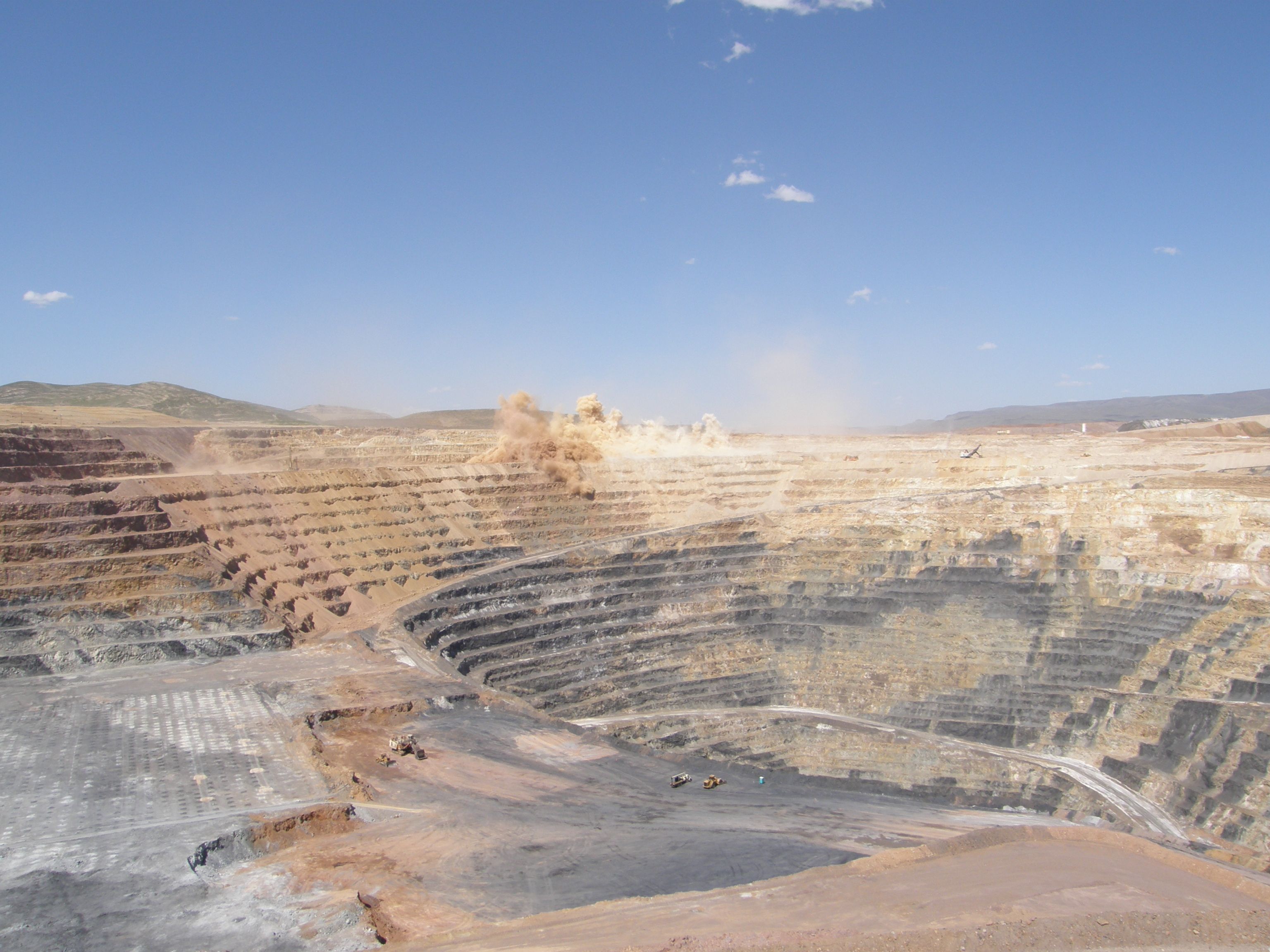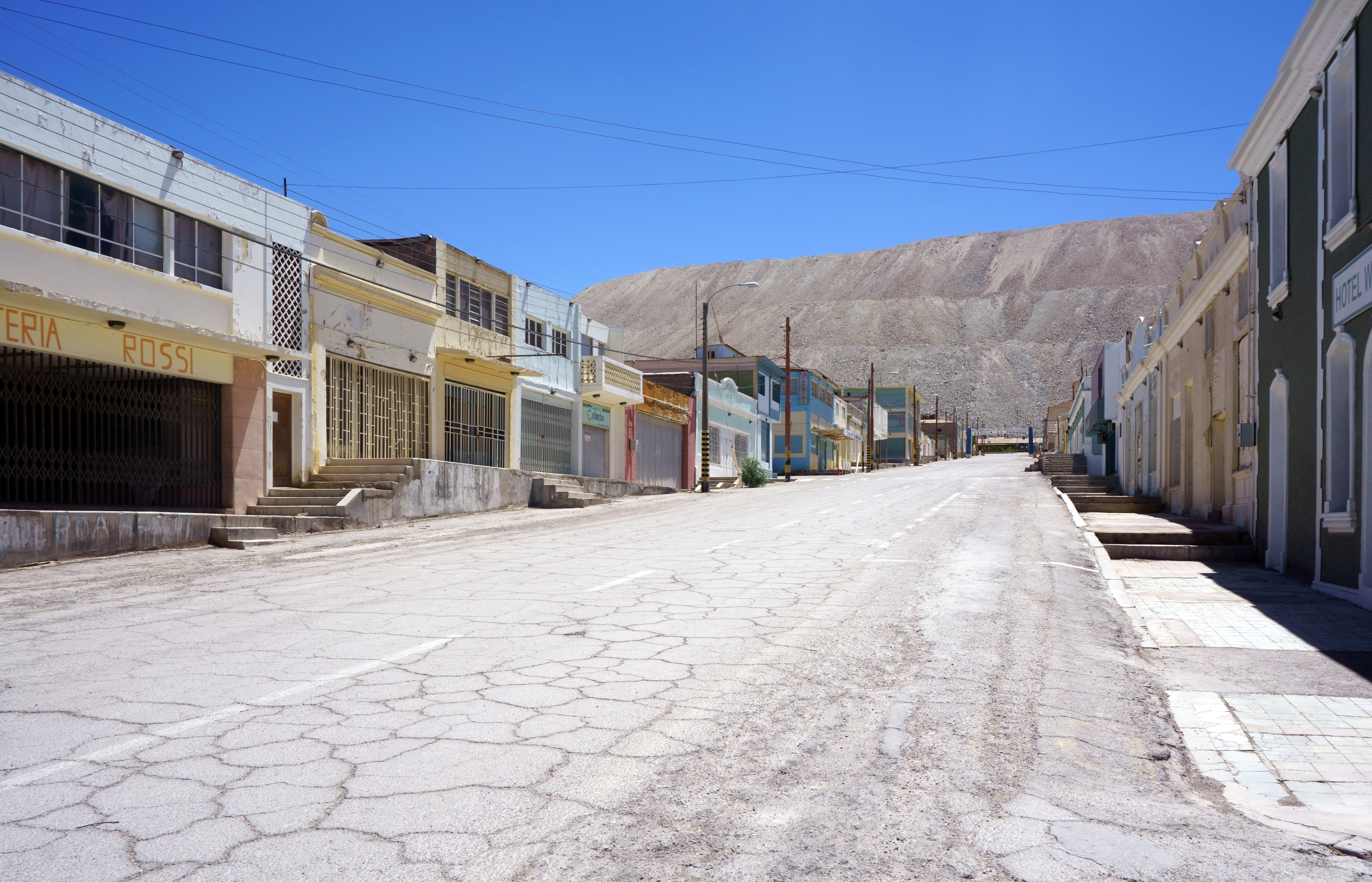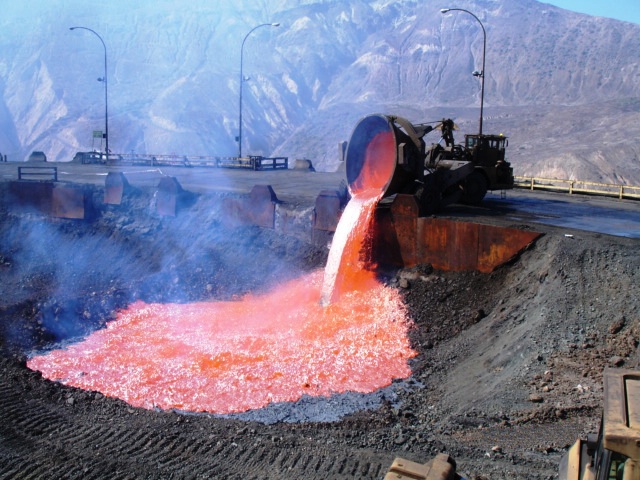|
Radomiro Tomic Mine
The Radomiro Tomic mine is an open pit mine that extracts copper oxide minerals at above sea level in the Andes mountains near to Chuquicamata mine and Calama in northern Chile's Antofagasta Region. Although this deposit was discovered in the 1950s, its operations started only in 1995, after Codelco updated the feasibility studies for its exploitation and acquired the technology necessary to exploit it profitably. Today, Chilean Copper Corporation (Codelco) controls the mine. Until 1999, Radomiro Tomic was referred to as "Codelco Chile Division Radomiro Tomić", since then, (Codelco The National Copper Corporation of Chile (), abbreviated as Codelco, is a Chilean state-owned mining company and the largest copper mining company in the world. It was formed in 1976 from foreign-owned copper companies that were nationalised in 1 ...) has renamed it "Codelco Norte". External links Codelco {{DEFAULTSORT:Radomiro Tomic Copper mines in Chile Mines in Antofagasta Region Codelco ... [...More Info...] [...Related Items...] OR: [Wikipedia] [Google] [Baidu] |
Open-pit Mining
Open-pit mining, also known as open-cast or open-cut mining and in larger contexts mega-mining, is a surface mining technique that extracts rock (geology), rock or minerals from the earth. Open-pit mines are used when deposits of commercially useful ore or rocks are found near the surface where the overburden is relatively thin. In contrast, deeper mineral deposits can be reached using underground mining. Open-pit mining is considered one of the most dangerous industrial sector, sectors in the industrial world. It causes significant effects to miners' health, as well as damage to the ecological land and water. Open-pit mining causes changes to vegetation, soil, and bedrock, which ultimately contributes to changes in surface hydrology, groundwater levels, and flow paths. Additionally, open-pit produces harmful pollutants depending on the type of mineral being mined, and the type of mining process being used. Extraction Miners typically drill a series of test holes to locate ... [...More Info...] [...Related Items...] OR: [Wikipedia] [Google] [Baidu] |
Andes Mountains
The Andes ( ), Andes Mountains or Andean Mountain Range (; ) are the longest continental mountain range in the world, forming a continuous highland along the western edge of South America. The range is long and wide (widest between 18°S and 20°S latitude) and has an average height of about . The Andes extend from south to north through seven South American countries: Argentina, Chile, Bolivia, Peru, Ecuador, Colombia, and Venezuela. Along their length, the Andes are split into several ranges, separated by intermediate depressions. The Andes are the location of several high plateaus—some of which host major cities such as Quito, Bogotá, Cali, Arequipa, Medellín, Bucaramanga, Sucre, Mérida, El Alto, and La Paz. The Altiplano Plateau is the world's second highest after the Tibetan Plateau. These ranges are in turn grouped into three major divisions based on climate: the Tropical Andes, the Dry Andes, and the Wet Andes. The Andes are the highest mountain r ... [...More Info...] [...Related Items...] OR: [Wikipedia] [Google] [Baidu] |
Chuquicamata
Chuquicamata ( ; referred to as Chuqui for short) is the largest open-pit mining, open pit copper Mining, mine in terms of excavated volume in the world. It is located in the north of Chile, just outside Calama, Chile, Calama, at above sea level. It is northeast of Antofagasta and north of the capital, Santiago, Chile, Santiago. Flotation and smelting facilities were installed in 1952, and expansion of the refining facilities in 1968 made 500,000 tons annual copper production possible in the late 1970s. Previously part of Anaconda Copper, the mine is now owned and operated by Codelco, a Chilean state enterprise, since the Chilean nationalization of copper in the late 1960s and early 1970s. Its depth of makes it the second deepest open-pit mine in the world, after Bingham Canyon Mine in Utah, United States. Etymology There are several versions of the meaning of ''Chuquicamata''. The most widely known seems to be that it means the limit (camata) of the land of the Chuqui. Yet the ... [...More Info...] [...Related Items...] OR: [Wikipedia] [Google] [Baidu] |
Calama, Chile
Calama is a city and commune in the Atacama Desert in northern Chile. It is the capital of El Loa Province, part of the Antofagasta Region. Calama is one of the driest cities in the world with average annual precipitation of just . The River Loa, Chile's longest, flows through the city. Calama has a population of 147,886 (2012 census). The commune also encompasses the Quechua communities of Estación San Pedro, Toconce and Cupo; and the Lickan-antay communities of Taira, Conchi Viejo, Lasana, San Francisco de Chiu Chiu, Aiquina-Turi, and Caspana. In 2003 the nearby town of Chuquicamata, once the largest open-pit copper mine in the world, was dismantled citing environmental reasons and encroachment from the mine's expansion. Residents of Chuquicamata then moved to Calama, away from company-owned residences, to find housing on their own. Etymology There are a variety of hypotheses about the origin of the name "Calama," but the two main accounts suggest that it comes from ... [...More Info...] [...Related Items...] OR: [Wikipedia] [Google] [Baidu] |
Chile
Chile, officially the Republic of Chile, is a country in western South America. It is the southernmost country in the world and the closest to Antarctica, stretching along a narrow strip of land between the Andes, Andes Mountains and the Pacific Ocean. Chile had a population of 17.5 million as of the latest census in 2017 and has a territorial area of , sharing borders with Peru to the north, Bolivia to the northeast, Argentina to the east, and the Drake Passage to the south. The country also controls several Pacific islands, including Juan Fernández Islands, Juan Fernández, Isla Salas y Gómez, Desventuradas Islands, Desventuradas, and Easter Island, and claims about of Antarctica as the Chilean Antarctic Territory. The capital and largest city of Chile is Santiago, and the national language is Spanish language, Spanish. Conquest of Chile, Spain conquered and colonized the region in the mid-16th century, replacing Incas in Central Chile, Inca rule; however, they Arauco War ... [...More Info...] [...Related Items...] OR: [Wikipedia] [Google] [Baidu] |
Antofagasta Region
The Antofagasta Region (, ) is one of Chile's Administrative divisions of Chile, sixteen first-order administrative divisions. Being the second-largest region of Chile in area, it comprises three provinces, Antofagasta Province, Antofagasta, El Loa and Tocopilla Province, Tocopilla. It is bordered to the north by Tarapacá Region, Tarapacá, by Atacama Region, Atacama to the south, and to the east by Bolivia and Argentina. The region's capital is the port city of Antofagasta; another one of its important cities is Calama, Chile, Calama. The region's main economic activity is copper mining in Chile, copper mining in its giant inland porphyry copper, porphyry copper systems. Antofagasta's climate of Chile, climate is extremely arid, albeit somewhat milder near the coast. Nearly all of the region is devoid of vegetation, except close to the Loa River and at oases such as San Pedro de Atacama. Much of the inland is covered by Salt pan (geology), salt flats, tephra and lava flows, and ... [...More Info...] [...Related Items...] OR: [Wikipedia] [Google] [Baidu] |
Codelco
The National Copper Corporation of Chile (), abbreviated as Codelco, is a Chilean state-owned mining company and the largest copper mining company in the world. It was formed in 1976 from foreign-owned copper companies that were nationalised in 1971. As of 2023 its most productive mines are Radomiro Tomic and El Teniente. Since 2024 Codelco is also a lithium mining company after an agreement was reached with Sociedad Química y Minera which exploits brine from Salar de Atacama. The headquarters are in Santiago and the seven-man board of directors is appointed by the President of the Republic. It has the Minister of Mining as its president and six other members including the Minister of Finance and one representative each from the Copper Workers Federation and the National Association of Copper Supervisors. It is currently the largest copper producing company in the world and produced 1.66 million tonnes of copper in 2007, 11% of the world total. It owns the world's largest kn ... [...More Info...] [...Related Items...] OR: [Wikipedia] [Google] [Baidu] |
Copper Mines In Chile
Copper is a chemical element; it has symbol Cu (from Latin ) and atomic number 29. It is a soft, malleable, and ductile metal with very high thermal and electrical conductivity. A freshly exposed surface of pure copper has a pinkish-orange color. Copper is used as a conductor of heat and electricity, as a building material, and as a constituent of various metal alloys, such as sterling silver used in jewelry, cupronickel used to make marine hardware and coins, and constantan used in strain gauges and thermocouples for temperature measurement. Copper is one of the few metals that can occur in nature in a directly usable, unalloyed metallic form. This means that copper is a native metal. This led to very early human use in several regions, from . Thousands of years later, it was the first metal to be smelted from sulfide ores, ; the first metal to be cast into a shape in a mold, ; and the first metal to be purposely alloyed with another metal, tin, to create bronze, . Commonly ... [...More Info...] [...Related Items...] OR: [Wikipedia] [Google] [Baidu] |
Mines In Antofagasta Region
Mine, mines, miners or mining may refer to: Extraction or digging *Miner, a person engaged in mining or digging *Mining, extraction of mineral resources from the ground through a mine Grammar *Mine, a first-person English possessive pronoun Military * Mining (military), digging under a fortified military position to penetrate its defenses * Mine warfare ** Anti-tank mine, a land mine made for use against armored vehicles ** Antipersonnel mine, a land mine targeting people walking around, either with explosives or poison gas ** Bangalore mine, colloquial name for the Bangalore torpedo, a man-portable explosive device for clearing a path through wire obstacles and land mines ** Cluster bomb, an aerial bomb which releases many small submunitions, which often act as mines ** Land mine, explosive mines placed under or on the ground ** Naval mine, or sea mine, a mine at sea, either floating or on the sea bed, often dropped via parachute from aircraft, or otherwise lain by surface ... [...More Info...] [...Related Items...] OR: [Wikipedia] [Google] [Baidu] |
Open-pit Mines
Open-pit mining, also known as open-cast or open-cut mining and in larger contexts mega-mining, is a surface mining technique that extracts rock (geology), rock or minerals from the earth. Open-pit mines are used when deposits of commercially useful ore or rocks are found near the surface where the overburden is relatively thin. In contrast, deeper mineral deposits can be reached using underground mining. Open-pit mining is considered one of the most dangerous industrial sector, sectors in the industrial world. It causes significant effects to miners' health, as well as damage to the ecological land and water. Open-pit mining causes changes to vegetation, soil, and bedrock, which ultimately contributes to changes in surface hydrology, groundwater levels, and flow paths. Additionally, open-pit produces harmful pollutants depending on the type of mineral being mined, and the type of mining process being used. Extraction Miners typically drill a series of test holes to locate ... [...More Info...] [...Related Items...] OR: [Wikipedia] [Google] [Baidu] |





